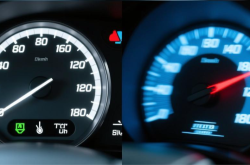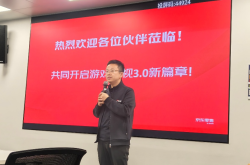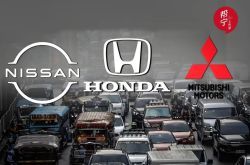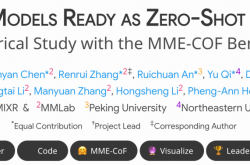Eco-Collaboration Sparks an Autonomous Driving Market Valued at 8 Trillion Yuan
![]() 11/13 2025
11/13 2025
![]() 358
358
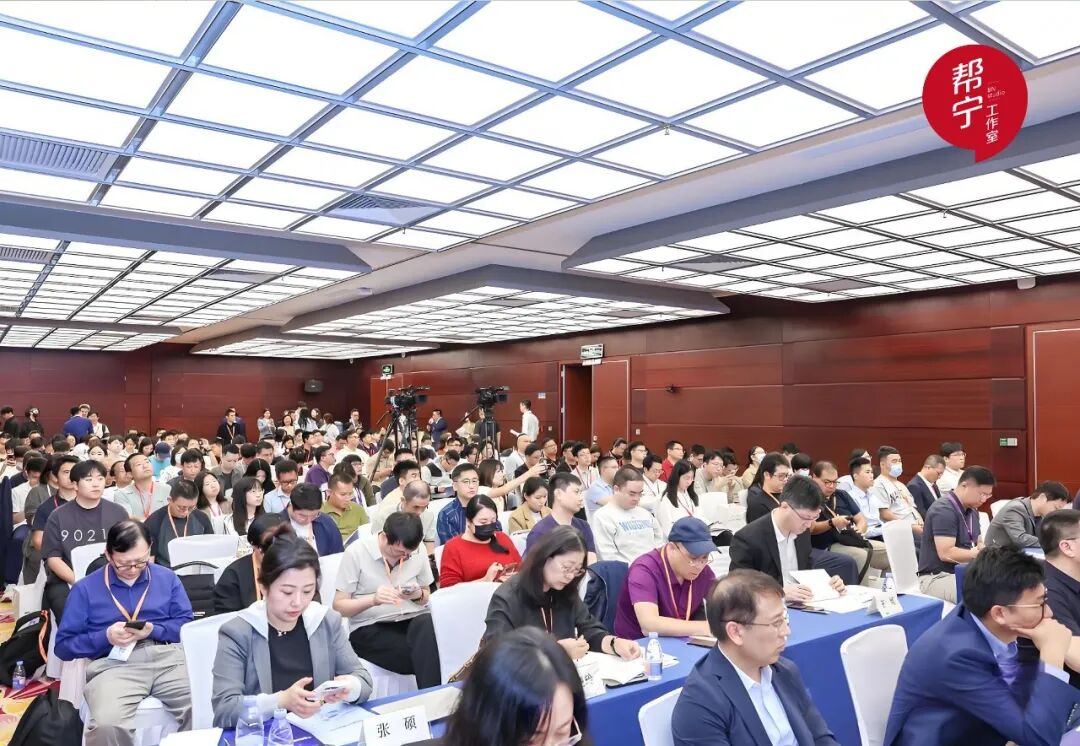
"Emergence of the Automotive Competitiveness 'New Triangle'"
Author | Shen Tianxiang
Editor | Li Guozheng
Produced by | Bangning Studio (gbngzs)
On November 7, the Chebaihui Research Institute and Shenzhen Yinwang Intelligent Company co-hosted the inaugural Autonomous Driving Mobility Ecosystem Forum. Themed "Co-building a New Ecosystem for Autonomous Driving, Co-creating New Value for Autonomous Driving," the event brought together leaders from relevant government bodies, industry experts, and representatives from cross-sectoral enterprises. They convened to deliberate on the core propositions and future pathways for constructing an autonomous driving ecosystem.
The forum established a cross-sectoral collaborative exchange platform, fostering industrial synergy through the unveiling of the "Autonomous Driving Mobility Ecosystem 2025" report and an ecosystem co-construction initiative.
▍01 The Emergence of the Automotive Competitiveness 'New Triangle'
During the forum's keynote speech session, Zhang Yongwei, Chairman of Chebaihui, proposed that in the era of intelligence, the automotive industry's competitiveness has evolved into a "New Triangle Model."
This model transcends the traditional automotive industry's singular focus on manufacturing, introducing two new core pillars: firstly, digital and AI technologies, which are fundamentally shaping the future of automobiles; and secondly, automotive services, which are emerging as a burgeoning secondary automotive industry.

During the traditional non-intelligent era and the early stages of new energy development, the automotive industry's competitiveness was primarily centered on hardware manufacturing and technological breakthroughs, such as engine efficiency and battery energy density.
However, with the dawn of the intelligent era, digital and AI technologies have emerged as new variables reshaping the industry landscape. Through technologies like intelligent cockpits, autonomous driving algorithms, and vehicle-road-cloud collaboration, they have endowed automobiles with novel capabilities in perception, decision-making, and interaction.
From a global perspective, Europe maintains a strong foothold in automotive manufacturing but lags in digital and AI technologies; the United States leads in digital technology, AI, and their applications; while China boasts a more vibrant service ecosystem, offering vast opportunities for developing the full lifecycle value of the automotive industry.
Zhang Yongwei emphasized that promoting the coordinated development of "dual intelligence"—intelligent manufacturing in the automotive sector and intelligent services in the automotive industry—represents China's unique path to building a strong automotive nation and enhancing the irreplaceability of China's automotive industry in global competition.
He predicted that by 2028, the automotive services sector will evolve into a market exceeding 8 trillion yuan, becoming a veritable secondary automotive industry.
▍02 Global Acceleration of Autonomous Driving Deployment
At the forum, Li Wenguang, President of Yinwang Intelligent Driving Product Line, shared a set of data that vividly illustrated the acceleration of autonomous driving commercialization:
In 2023, the penetration rate of assisted driving in new vehicles stood at only 19%, but it surged past 60% by the first half of 2024. Focusing on electrified models, the penetration rate of assisted driving exceeded 60%, far exceeding industry expectations.
From a user scenario perspective, the usage rate of highway-assisted driving has reached over 60%, becoming a mainstream choice despite room for improvement. Urban-assisted driving witnessed a rapid increase in user adoption, rising from 15%-16% to nearly 20% after the Huawei ADS4 version upgrade, and it continues to climb with algorithm iterations. Parking scenarios, as a "high-frequency necessity," boast a usage rate of 42%, making it one of the most widely accepted autonomous driving functions among users.

Globally, the commercialization process of autonomous driving varies by region.
The United States adopts an ex-post regulatory mechanism, with 24 states permitting autonomous vehicle operations. Companies like Waymo and Tesla have accumulated over 70 million kilometers of operational mileage, with a significant reduction in accident rates. Germany, renowned for its stringent regulations, has witnessed Mercedes-Benz achieve autonomous driving at 95 km/h on highways and autonomous parking, both legally permitted. The United Kingdom plans to launch commercial pilots early next year, while Japan has already clarified relevant regulations and is advancing mobility service implementations.
China's autonomous driving deployment follows a distinctive path of policy guidance, local pilots, and enterprise breakthroughs. Currently, national-level legislation has entered the solicitation of opinions phase, with several key standards (such as L3 autonomous driving access and data security) gradually being clarified.
At the local level, cities like Shanghai and Shenzhen have taken the lead in issuing pilot regulations. For instance, Shenzhen permits L3 autonomous vehicles to operate on designated roads, while Shanghai has opened commercial fee-based Robotaxi pilots.
In tests organized by ministries, nine enterprises across seven cities have conducted L3 autonomous driving access tests, with some completing them and preparing to launch To C commercial pilots. In the Robotaxi sector, over 10 cities, including Beijing, Guangzhou, and Chongqing, have initiated operations, with some achieving regularized fully autonomous services.
Based on dual preparations in policy and technology, Li Wenguang provided a timeline for China's autonomous driving deployment: achieving large-scale commercialization of highway L3 autonomous driving by 2026; launching urban L4 autonomous driving pilots and unmanned mainline logistics tests by 2027; and realizing large-scale commercialization of unmanned mainline logistics by 2028.
"This rhythm is not wishful thinking," he explained. "Currently, the ADS4 system covers over 90% of highway scenarios, with obstacle recognition accuracy in urban scenarios exceeding 99%. Coupled with improved infrastructure, the conditions for deployment are gradually maturing."
▍03 Cross-Sectoral Collaboration Unlocks Diverse Values
The "Autonomous Driving Mobility Ecosystem 2025" report unveiled at the forum systematically outlined the application value of autonomous driving across multiple sectors, providing clear directions for ecosystem co-construction.

For instance, in the parking sector, intelligent solutions can eliminate the difficulty of finding parking spaces and enhance resource utilization. In the charging sector, autonomous charging and off-peak charging can be realized, with future vehicles also serving as mobile energy storage units to balance the energy network.
In the service sector, vehicles can autonomously schedule maintenance and cleaning during off-peak hours, offering precise value-added services based on data.
The real estate and property management sector can optimize spatial planning and construct a vehicle-space-human collaborative ecosystem.
The insurance sector can form a risk assessment system centered on machine driving reliability based on full-lifecycle autonomous driving data, giving rise to new types of intelligent driving insurance.
To foster ecosystem collaboration, Yinwang Intelligent plans to launch the Qiankun Intelligent Driving Ecosystem Open Platform, enabling ecosystem partners to independently integrate and develop by opening industry suites for charging, parking, car washing, and insurance.
Simultaneously, it will establish the Intelligent Driving Ecosystem OpenLAB, providing partners with end-to-end empowerment from development and testing to commercial cooperation access. Currently, the platform has completed docking with several leading operators and is expected to refine suite construction within a year.
In terms of specific scenario implementations, autonomous driving combined with charging has achieved collaboration between ADS Cloud and charging operators, resolving plug-in and unplugging issues through robotic arm technology or manual collaboration via flash delivery platforms. Autonomous driving combined with parking has realized autonomous vehicle searches for available parking spaces in communities and shopping malls by connecting cloud data from parking lots, effectively alleviating parking pressures in areas like hospitals and commercial districts.
Participants at the forum believed that with the deep integration of policies, technologies, services, and scenarios, autonomous driving is accelerating its transition from technological experiments to large-scale deployment, continuously reshaping travel modes, optimizing urban governance, and injecting strong momentum into the development of intelligent transportation and the digital economy.

